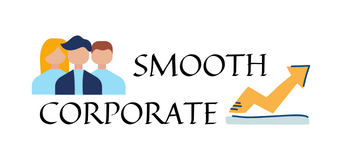While it may be tempting to save money whenever possible, you should also be realistic about your budget. If you are setting up your online shop on a shoestring budget, you may want to consider other expenses, such as buying a new computer or purchasing marketing materials. Depending on the size of your shop, you may also need to purchase inventory. To avoid spending more than you can afford, you should choose your ecommerce platform wisely and decide on the design of your website in advance.
Cost of setting up an ecommerce shop
While you may have heard of starting an online store for free, the cost of setting up an ecommerce shop will probably blow you away. There are many things to consider when setting up an ecommerce shop, from the software to the storefront design. Aside from the price of the software, your business will also require regular maintenance and marketing. The maintenance of the site will vary, depending on how much traffic you get, and how much product you sell. A good place to start is the marketing budget. This budget can be used to pay for social media ads and paid search engine optimization.
Regardless of how much you want to spend on an eCommerce platform, you’ll need a domain name, web hosting, and SSL certificate. You may already have these things, but you can also buy a domain name. Purchasing your own domain name is not a good idea if you’re looking to create a unique eCommerce site that stands out from the crowd. Fortunately, many eCommerce platforms provide these services for free.
There are many other expenses involved in setting up an ecommerce business, but these are often necessary. One of the most crucial is financial forecasting. A properly constructed financial forecast will keep you from facing any unexpected costs and surprises later on. Once you’ve outlined all of these costs, you can determine how much money you’ll need to start your business. After all, you want to make sure that you can afford your business, so it’s important to do your research before you begin.
While the initial costs of setting up an ecommerce shop can be high, they’re not unmanageable. When determining the cost, you should consider how much time you’ll need to devote to it. Using a purpose-built eCommerce platform will save you time as you don’t have to connect multiple programs, design checkout carts, or customize product pages. And don’t forget to account for ongoing maintenance. Setting up a basic eCommerce shop may take you 100 hours, and a more complex enterprise-level one can take you up to 200 hours.
Choosing the right ecommerce platform
When setting up an ecommerce shop, the most important thing to look for is security. Not only should it be PCI compliance, but it should also have a secure SSL certificate. The platform should be protected from software attacks, as well as having data backups and fraud prevention tools. You should also look for security audits and questionable fees for upgrading the site and connecting with social media.
The next thing to consider is your needs. Do you want to offer products for sale that can be easily found by customers? Are you planning to offer subscriptions or allow customers to pay using credit cards? Look for features that match what you need. If your current platform does not provide the functionality you need, you can always purchase apps, plugins, and extensions. Ultimately, it’s a matter of personal preference, but it’s important to look for the features that you need.
You’ll also want to consider the platform’s support. Not only does your platform need to be able to support your business needs, but it should also provide a way to expand if necessary. There are many platforms for ecommerce, including Magento. A free plan is available, but you’ll likely need the help of a developer if you’re not familiar with it.
When choosing an ecommerce platform, look for features that are SEO-friendly. While some platforms are designed specifically for beginners, others are better suited for larger companies. Look for a platform that’s affordable, yet also compatible with brick-and-mortar locations and your marketing budget. And don’t forget to consider your marketing strategy and whether your business can afford to hire professional SEO specialists.
Regardless of your business type, the right ecommerce platform can improve the management and results of your business. While it can be tricky to switch platforms, it’s essential for your ecommerce business to choose the right one. It should suit your GMV. For example, a high-end business might need a more customizable platform than one that caters to a smaller scale business.
Choosing a domain name
Choosing a domain name for your business is an important decision. You will be able to identify your brand, products, and industry through the domain name. In addition, it will help to use a name that reflects your brand and the community you’re part of. Regardless of your business type, following best practices for domain name selection can help you get the most from your business.
Your ecommerce domain should be easy to remember. Choose a domain name that is easy to type into your browser, especially on mobile devices. Using a memorable domain name will help your customers find you easily. Try out some of the possible domain names to see which one people remember easily. Once you’ve found one you’re sure of, get online and try it out. You can test it to make sure that it’s memorable and not too long.
When choosing a domain name, make sure it’s easy to remember. It’s best to avoid common expressions and brand names, which are often trademarked. Additionally, make sure your domain name is easy to type and SEO-friendly. If your product niche is popular, your domain name could be purchased quickly if someone already owns the trademarked version. You should also avoid using too many numbers, as they could affect your search engine ranking.
Ideally, your domain name should evoke a sense of your audience. This way, people will be more likely to remember your name and choose your site over another. For instance, if you’re a woman’s fashion store, your domain name should be “forever 21” to represent young, fun women. The same is true of the brand name “bestbuy.com,” which tells potential customers that they can purchase the best things. Obviously, you don’t want to attract customers who don’t know what your product is all about.
Your domain name can affect the growth of your business and is one of the most important decisions you’ll ever make. It will represent your brand on the web and should be memorable and rich in keywords. This will help you drive traffic and boost your conversions. And as with all marketing, your domain name serves as an investment and strategic long-term. If you’re building an eCommerce shop, choosing a good domain name is an essential first step in the success of your business.
Choosing a theme
Choosing a theme for an eCommerce shop is an important aspect of setting up your online store. Your theme should represent your business and reflect your brand image, while maintaining a clean and simple design. You should also choose a theme that is malleable so that it will adapt to your business. In addition, make sure that your chosen theme works well with ecommerce plugins. Listed below are tips to help you choose a theme.
– Choose a theme that focuses on selling products. The Hugo eCommerce theme focuses on selling products and takes out the extraneous features. This is a great choice for those who are not too tech-savvy, as the theme is designed for the average user. Similarly, Eva strikes a balance between useful functionality and being overly complex. It’s a great choice for those who don’t want to spend hours customizing their shop.
– Consider color schemes. Choosing the right color scheme for your store is important for generating user engagement and conversions. Make sure to choose color schemes that match the overall branding of your brand. Color combinations are difficult to read, and your customers should feel comfortable with the colors you choose. Keep in mind that people with color-blindness may prefer a muted or lighter theme. These factors should be taken into account when choosing a theme for your website.
– Speed is a big factor when it comes to choosing a theme for an ecommerce shop. If your site is slow to load, your visitors won’t stay long. Slow loading sites don’t make for a great user experience, and they may also be targets for attackers. So, you’ll need to make sure your theme loads quickly enough for your customers to buy products.
– Think like a buyer. What information do you need to make an informed decision about purchasing a product? Different types of products may require different types of content. Think like a customer and decide what content is essential to them. Choosing a theme that meets your requirements will make the process easier. But remember that if you’re not 100% happy with your chosen theme, you can always change it later if you need to.




